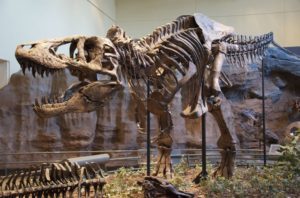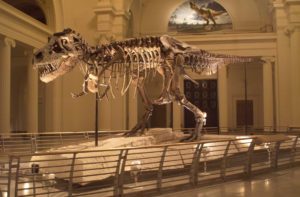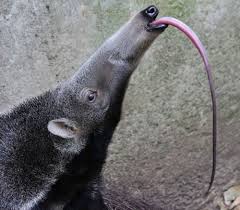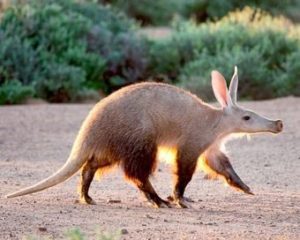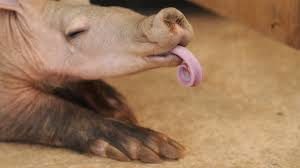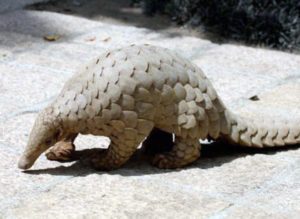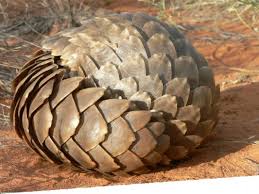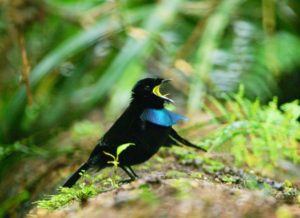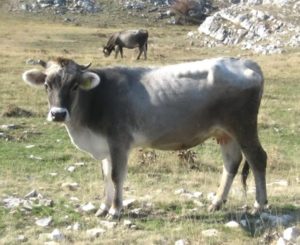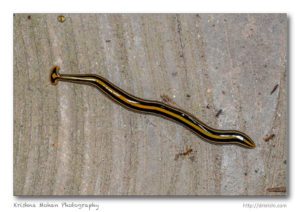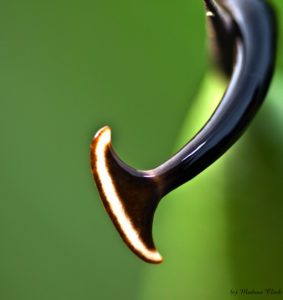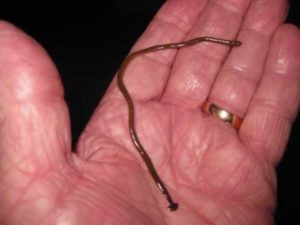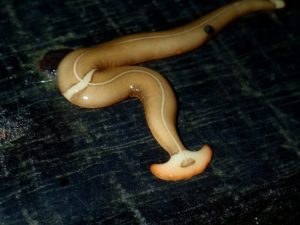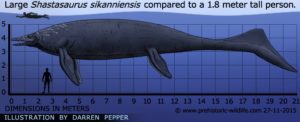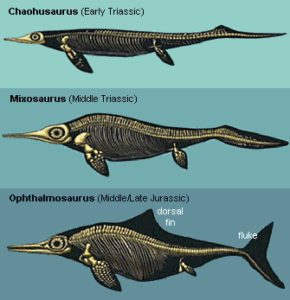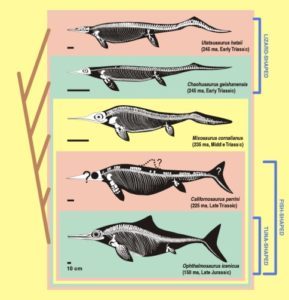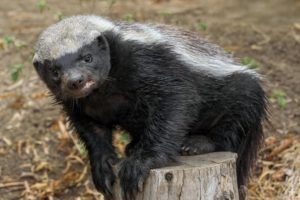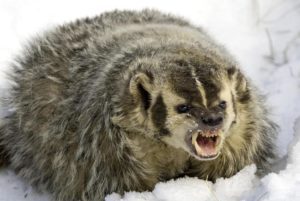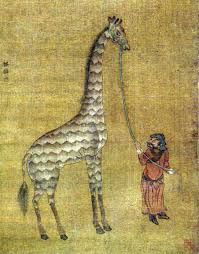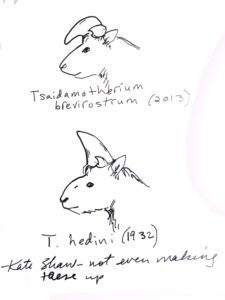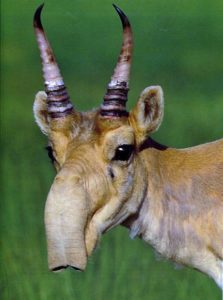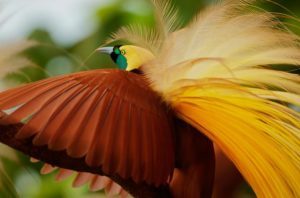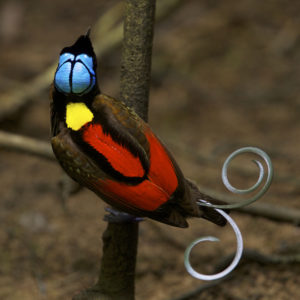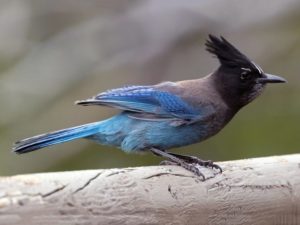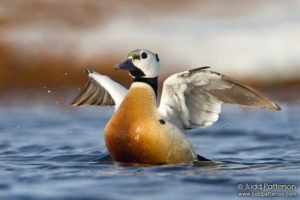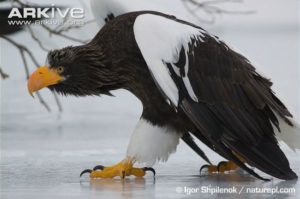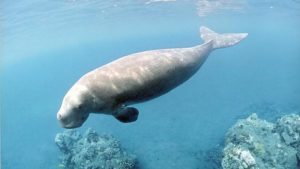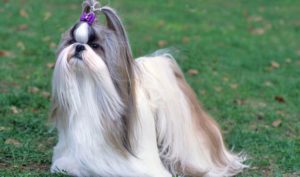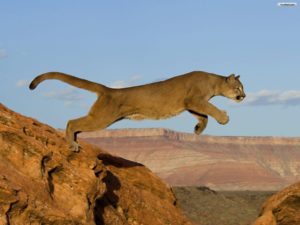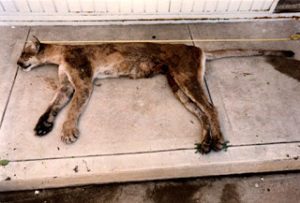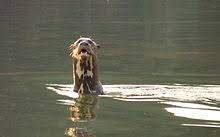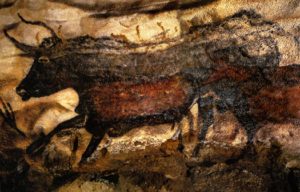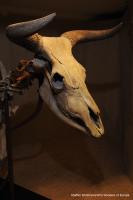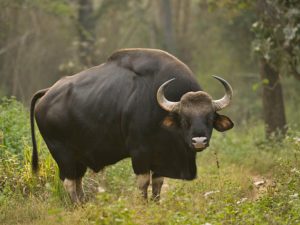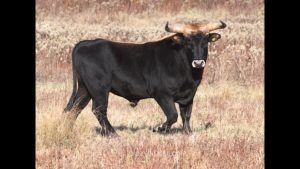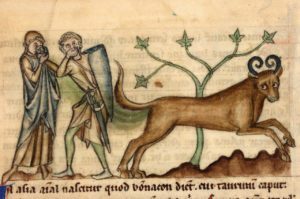Podcast: Play in new window | Download (Duration: 19:30 — 19.3MB)
Finally, it’s the follow-up to our first sea monsters episode that sounds so terrible now that I know how to put a podcast together!
Here’s the published drawings of a strange animal seen from the HMS Daedalus:

Here’s Drummond’s sketch of what he saw:

Here’s a sketch of the HMS Plumper animal sighted:

And here’s a sei whale rostrum sticking up out of the water while it’s skim feeding:
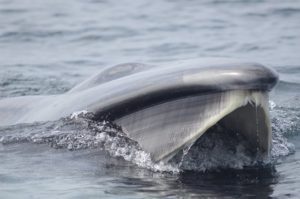
Sei whales are neat and have gigantic mouths:
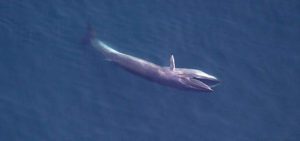
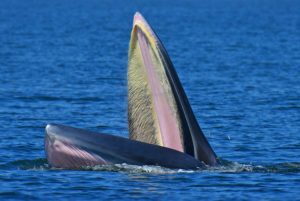
The rotten “sea serpent” that’s actually a decomposing baleen whale:
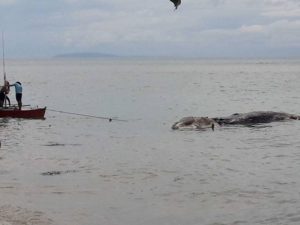
The Naden Harbour Carcass. It’s the black thing on the table with a white backdrop. It doesn’t look like much, but you probably wouldn’t look like much either after being eaten by a sperm whale:
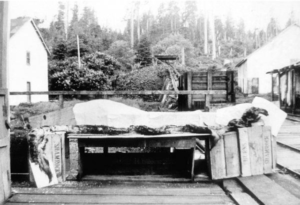
Unexpected seal says “Hello, I am not a sea serpent, I am a stock photo”:

Hagelund’s sketch of the little animal he caught:

A pipefish with a lollipop tail and some drawings of pipefish:

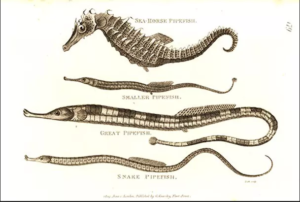
The strange animal seen from the Valhalla:
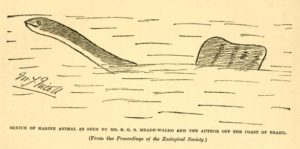
Show transcript:
Welcome to Strange Animals Podcast. I’m your host, Kate Shaw.
Recently I listened to episode six, about sea monsters. It’s climbed to our third most popular episode and when I heard it again, oh man, I winced. I was still really new to podcasting then and that episode sounds like someone reading a book report out loud to the class. So it’s time to do a new sea monsters episode and explore more mysteries of the world’s oceans, hopefully with a lot more vocal expression.
On August 6, 1848, about 5 o’clock in the afternoon, the captain and some of the crew of HMS Daedalus saw something really big in the water. The ship was sailing between the Cape of Good Hope and St. Helena on the way back to England from the East Indies. It was an overcast day with a fresh wind, but nothing unusual. The midshipman noticed something in the water he couldn’t identify and told the officer of the watch, who happened to be walking the deck at the time with the captain. Most of the crew was at supper.
This is what the captain, Peter M’Quhae, described in his report when the ship arrived at Plymouth a few months later.
“On our attention being called to the object, it was discovered to be an enormous serpent, with head and shoulders kept about four feet constantly above the surface of the sea, and, as nearly as we could approximate, by comparing it with the length of what our main-topsail yard would show in the water, there was at the very least sixty feet of the animal à fleur d’eau [that means at the water’s surface], no portion of which was, to our perception, used in propelling it through the water, either by vertical or horizontal undulation. It passed rapidly, but so close under our lee quarter, that had it been a man of my acquaintance, I should easily have recognized his features with the naked eye; and it did not, either in approaching the ship or after it had passed in our wake, deviate in the slightest degree from its course to the S.W., which it held on at the pace of from twelve to fifteen miles per hour, apparently on some determined purpose.
“The diameter of the serpent was about fifteen or sixteen inches behind the head, which was, without any doubt, that of a snake; and it was never, during the twenty minutes that it continued in sight of our glasses, once below the surface of the water; its colour a dark brown, with yellowish white about the throat. It had no fins, but something like a mane of a horse, or rather a bunch of seaweed, washed about its back.”
The original Times article also mentioned large jagged teeth in a jaw so large that a man could have stood up inside the mouth, but this seems to be an addition by the article’s writer, not the captain or crew.
The officer of the watch, Lieutenant Edgar Drummond, also published an excerpt from his own journal about the sighting, which appeared in a journal called the Zoologist in December 1848. It reads, “In the 4 to 6 watch, at about five o’clock, we observed a most remarkable fish on our lee quarter, crossing the stern in a S.W. direction; the appearance of its head, which, with the back fin, was the only portion of the animal visible, was long, pointed, and flattened at the top, perhaps ten feet in length, the upper jaw projecting considerably; the fin was perhaps twenty feet in the rear of the head, and visible occasionally; the captain also asserted that he saw the tail, or another fin about the same distance behind it; the upper part of the head and shoulders appeared of a dark brown colour, and beneath the under jaw a brownish white. It pursued a steady undeviating course, keeping its head horizontal with the surface of the water, and in rather a raised position, disappearing occasionally beneath a wave for a very brief interval, and not apparently for purposes of respiration. It was going at the rate of perhaps from twelve to fourteen miles an hour, and when nearest, was perhaps one hundred yards distant. In fact it gave one quite the idea of a large snake or eel. No one in the ship has ever seen anything similar, so it is at least extraordinary. It was visible to the naked eye for five minutes, and with a glass for perhaps fifteen more. The weather was dark and squally at the time, with some sea running.”
To translate some of this into metric, 60 feet is a little more than 18 meters, the 15 inch diameter the captain reported of the neck just behind the head is about 38 cm, and the speed of 13 mph is almost 21 km per hour.
A lot of people wrote in to the Times to discuss the sighting and suggest solutions. One writer claimed the animal couldn’t be a snake or eel, since a side to side undulating motion would have been obvious as the animal propelled itself with its tail. Another said it had to have been a snake but the undulations were only in the tail, which was below the water. Yet another article suggested it was a monstrous seal or other pinniped. Captain M’Quhai took exception to that one and wrote back stressing that he was familiar with seals and this definitely had not been one. Other suggestions included a basking shark or some other unknown species of shark, a plesiosaur, or a giant piece of seaweed.
Other similar sightings are on record, including a very similar one from the very end of 1849 off the coast of Portugal. In that one, an officer on HMS Plumper reported seeing “a long black creature with a sharp head, moving slowly, I should think about two knots, through the water, in a north westerly direction, there being a fresh breeze at the time, and some sea on. I could not ascertain its exact length, but its back was about twenty feet if not more above water; and its head, as near as I could judge, from six to eight. I had not time to make a closer observation, as the ship was going six knots through the water, her head E. half S., and wind S.S.E. The creature moved across our wake towards a merchant barque on our lee-quarter, and on the port tack. I was in hopes she would have seen it also. The officers and men who saw it, and who have served in parts of the world adjacent to whale and seal fisheries, and have seen them in the water, declare they have neither seen nor heard of any creature bearing the slightest resemblance to the one we saw. There was something on its back that appeared like a mane, and, as it moved through the water, kept washing about, but before I could examine it more closely, it was too far astern.”
Illustrations of the Daedalus sea serpent, which M’Quhai approved, were published in the Times. But the original sketch made by Drummond in his journal the day he saw the animal gives us a much better idea of what it looked like and what it probably was. The sketch accompanying the Plumper sighting reinforces the solution. It’s probable that both sightings, and probably many others, were of a sei whale skim feeding.
The sei is a baleen whale that’s generally considered the fourth largest whale, with some individuals growing almost 65 feet long, or nearly 20 meters. Females are larger than males. It lives all over the world although it likes deep water that isn’t too cold or too hot. It’s a mottled dark grey. Its fins are relatively short and pointed, its dorsal fin is tall and fairly far back on the animal’s body. Its tail flukes aren’t usually visible. Its rostrum, or beak, is pointed and short baleen plates hang down from it. The sei whale’s baleen is unusually fine, with a fringe that is curly and white and looks something like wool.
Unlike some whales, it doesn’t dive very deeply or for very long, and it’s usually relatively solitary. It spends a lot of its time at or near the surface, frequently skim feeding to capture krill and other tiny food. It does this by cruising along with its mouth open, often swimming on its side. It has throat pleats that allow its huge mouth to expand and hold incredible amounts of water. The whale closes its mouth and raises its huge tongue, forcing the water out through its baleen plates. Whatever krill and fish are caught by the baleen, the whale swallows.
A lot of baleen whales skim feed occasionally, but the sei is something of a skim feeding specialist. And it has a narrow, pointed rostrum that often sticks up out of the water as it skim-feeds, with pale baleen hanging down. This might easily look like a long snakey animal with a small head held up out of the water, especially in poor viewing conditions when the people involved are convinced they’re looking at a sea serpent. The sei whale is a fast swimmer too, easily able to cruise at the speeds described by the Daedalus and Plumper crews.
It’s not a perfect match, of course. The sei whale’s dorsal fin is pretty distinctive and if seen properly would have immediately told the crew they were looking at a whale. No one reported seeing anything that could be considered a whale’s breath either, sometimes called a spout. Since whales exhale forcefully and almost empty their lungs when they do, the cloud of warm air expelled looks like steam and is a tell-tale sign of a whale. Whales also don’t have hair on their rostrum that could wash around like a mane on a sea serpent’s neck. So while it seems likely that the Daedalus and Plumper sightings were of sei or other baleen whales skim feeding, we can’t know for sure.
Incidentally, the sei whale wasn’t fully protected from whaling until 1986. Japan still hunts sei whales, supposedly for scientific purposes but no one’s really fooled. The whales they catch are sold for meat. In 2010, a restaurant in Los Angeles closed after being caught serving sei whale meat. The sei whale is still endangered but if people would stop killing it maybe it would be doing better. Whalers reported that when harpooned, sei whales would cry audibly, which apparently disturbed the whalers. Maybe if your job involves making animals cry you should go back to school and get a degree in nursing or teaching or something else that will make the world a better place, not worse.
Another whale is responsible for a mystery carcass washed up in the Philippines in 2017. The carcass looks like a dragon-like sea monster, but that’s due to decomposition. It’s actually a baleen whale, probably a gray whale, that had apparently been floating around for a while, getting nastier and more nibbled on every day.
Speaking of nasty, nibbled-on dead things, and whaling, in 1937 a sperm whale brought to Naden Harbor Whaling Station on a small Canadian island for processing turned out to have something so extraordinary in its stomach that the whalers took pictures of it. It was about ten feet long, or three meters, with a head said to be horselike or camel-like in shape with a drooping nose. Its body was long and thin, and it had short pectoral flippers and a single fluke or spade-shaped end on its tail. Its skin was either smooth or furry depending on which witness you believe, and there were signs it may have had baleen or gill rakers.
The carcass wasn’t kept, but pieces of it were reportedly sent to the British Columbia Provincial Museum, whose museum director suggested it might be a fetal baleen whale. Locals thought it might be a young cadborosaurus, a sea serpent occasionally sighted off the coast of British Columbia. It gets its name from Cadboro Bay, and is usually called Caddy. Caddy is generally described as 5 to 15 meters long, or 16 to almost 50 feet long, with a horse-like or camel-like head, big eyes, and a tail with horizontal flukes like a whale’s. Some witnesses say it has brown fur and horns or ears of some kind.
In 1992, a retired museum researcher named Ed Bousfield found three photos of the Naden Harbor carcass, long believed lost. This sparked up lots of debate, naturally, and lots of suggestions as to what the animal might be—a basking shark, a sea lion or other pinniped, an eel, an oarfish, and many others.
The problem, of course, is that the pictures aren’t very clear, we don’t have the actual body to examine, and the carcass had spent some time in the belly of a sperm whale so was in the process of being digested. But the whalers who found it had never seen anything like it before.
In 1968, a man called William Hagelund was yachting with his family when he heard splashing and saw a strange creature in the water. It was small, only about 16 inches long, or 40 cm, so he lowered a dinghy and caught it in a net. It had what appeared to be armored plates on its back, its flippers were odd-shaped, its snout was elongated but widened at the end, and it had a downy yellow fuzz or fur underneath. Hagelund put it in a bucket but it was so frantic to get out that he worried it would die. He made a drawing of it and released it.
Hagelund thought he’d caught a baby Caddy. But he didn’t share his story until twenty years later, when he wrote a book called Whalers No More.
But while Hagelund’s creature probably wasn’t a baby Caddy, it might have been something almost as strange. The pipefish is a fish related to the seahorse, and it resembles a seahorse that has straightened out. Some species have prehensile tails, some have little paddles at the end of their tails. Some are stripey. Like seahorses, the pipefish male has a brood pouch where he broods the female’s fertilized eggs. Not only does he protect the eggs, he supplies them with nutrients from his body while they grow. Because the female can lay more eggs than the male can hold in his brood pouch, females of some species of pipefish will have more than one mate. Pipefish rarely grow longer than around 16 inches, or 40 cm and have armored plating. The yellow fuzz Hagelund reported might have been algae.
It’s probable that at least some Caddy sightings are of moose swimming to or from one of the many small islands in the area. Moose will also dive to reach aquatic plants. Other Caddy sightings are probably of the Northern sea lion or Northern elephant seal, both of which are common in the area for at least part of the year.
Pinnipeds, in fact, may be the biggest factor to consider in any sea serpent or sea monster sightings. I learned this interesting fact after doing the research for the previous sea monster episode, but pinnipeds will stand vertically in the water to look around above the surface, and a big elephant seal can raise its head over three feet, or one meter, out of the water. If you’re in a boat and a big head and neck pops up out of the water nearby, your first thought is not going to be, “Oh, that’s an unexpected seal.” It’s going to be, “THIS GIANT ANIMAL IS GOING TO EAT ME.”
But that doesn’t mean there aren’t definite sea monsters out there. Far from it. On December 7, 1905, two naturalists spotted an animal they couldn’t recognize off the coast of Brazil.
The pair were Michael Nicholl and Edmund Meade-Waldo, part of a research team on the Valhalla. The ship was about 15 miles, or 24 km, from the mouth of the Parahiba River. At 10:15 a.m. Nicoll spotted a dorsal fin above the water that he didn’t recognize, about 100 yards away, or 91 meters. He asked Meade-Waldo to take a look, and he couldn’t identify the fish either. The fin was roughly rectangular, close to two feet high and six feet long, or 61 cm and 1.8 meters, and dark brown with an edge Meade-Waldo described as crinkled.
Meade-Waldo was looking at the fin through his binoculars when a head and long neck emerged from the water in front of the fin. He estimated it as 7 or 8 feet high, or over 2 meters, with a brown, turtle-like head. The animal moved its neck from side to side. They watched it until it was out of sight as the ship sailed away, but early the next morning, around 2 am, three crew members spotted what they thought was the same animal swimming underwater.
Nicholl and Meade-Waldo published their report in 1906. We still have no idea what they saw.
You can find Strange Animals Podcast online at strangeanimalspodcast.com. We’re on Twitter at strangebeasties and have a facebook page at facebook.com/strangeanimalspodcast. If you have questions, comments, or suggestions for future episodes, email us at strangeanimalspodcast@gmail.com. If you like the podcast and want to help us out, leave us a rating and review on Apple Podcasts or whatever platform you listen on. We also have a Patreon if you’d like to support us that way.
Thanks for listening!
